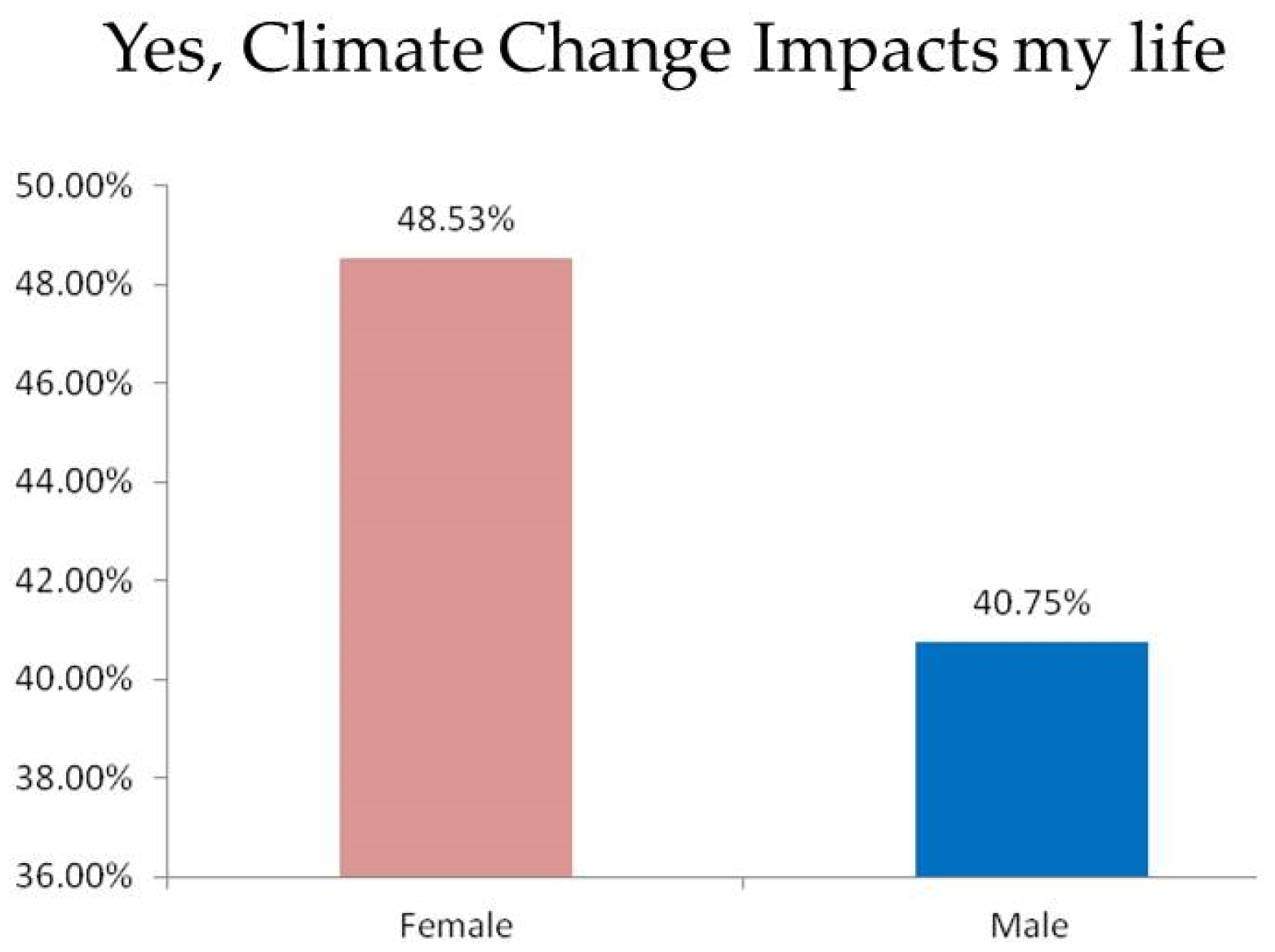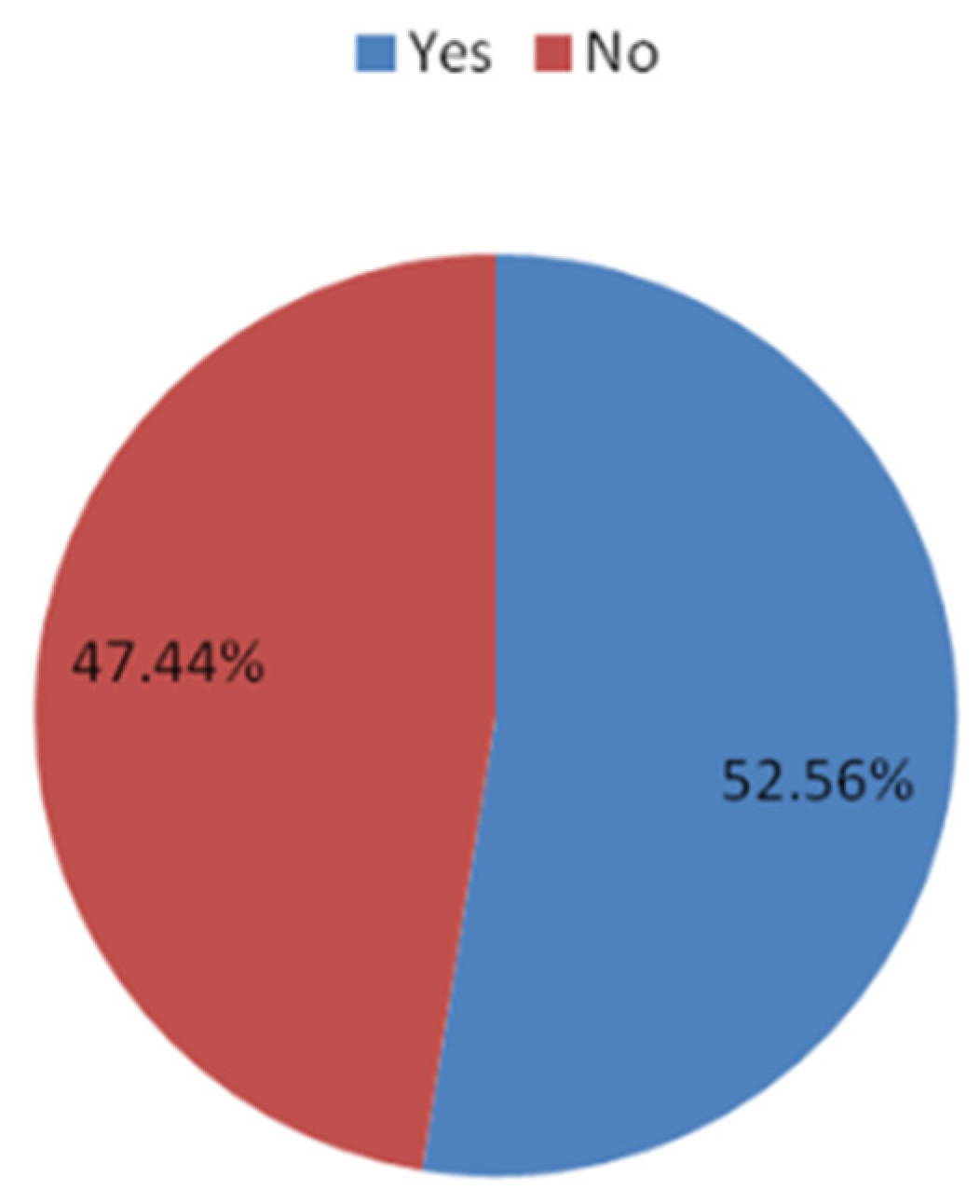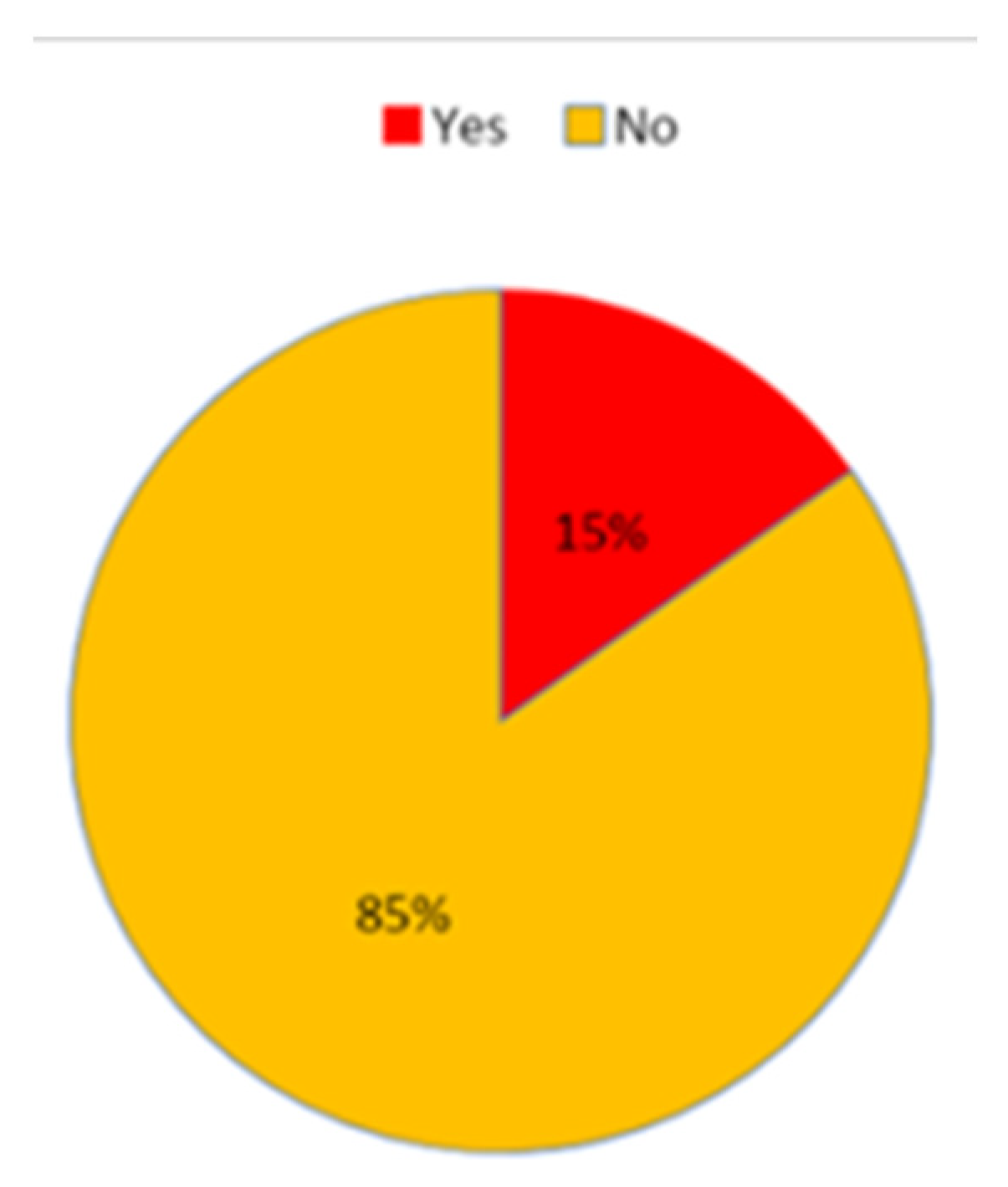A Survey of Renewable Energy, Climate Change, and Policy Awareness in Israel: The Long Path for Citizen Participation in the National Renewable Energy Transition
Abstract
1. Introduction
2. Background
2.1. The Energy Landscape in Israel
2.2. Energy Policy in Israel
3. Methodology and Data
4. Results
5. Discussion
6. Further Considerations and Policy Recommendations
Future Research
7. Conclusions
Author Contributions
Funding
Data Availability Statement
Conflicts of Interest
References
- Suitner, J.; Haider, W.; Philipp, S. Social innovation for regional energy transition? An agency perspective on transformative change in non-core regions. Reg. Stud. 2022, 1–13. [Google Scholar] [CrossRef]
- Li, F.G.N.; Trutnevyte, E.; Strachan, N. A review of socio-technical energy transition (STET) models. Technol. Forecast. Soc. Chang. 2015, 100, 290–305. [Google Scholar] [CrossRef]
- Steg, L.; Perlaviciute, G.; van der Werff, E. Understanding the human dimensions of a sustainable energy transition. Front. Psychol. 2015, 6, 805. [Google Scholar] [CrossRef] [PubMed]
- Steg, L. Limiting climate change requires research on climate action. Nat. Clim. Chang. 2018, 8, 759–761. [Google Scholar] [CrossRef]
- Cohen, J.J.; Reichl, J.; Schmidthaler, M. Re-focussing research efforts on the public acceptance of energy infrastructure: A critical review. Energy 2014, 76, 4–9. [Google Scholar] [CrossRef]
- Carattini, S.; Kallbekken, S.; Orlov, A. How to win public support for a global carbon tax. Nature 2019, 565, 289–291. [Google Scholar] [CrossRef]
- Setton, D. Social sustainability: Making energy transitions fair to the people. In The Role of Public Participation in Energy Transitions; Academic Press: Cambridge, MA, USA, 2020; ISBN 9780128195154. [Google Scholar]
- Schweizer, P.J.; Bovet, J. The potential of public participation to facilitate infrastructure decision-making: Lessons from the German and European legal planning system for electricity grid expansion. Util. Policy 2016, 42, 64–73. [Google Scholar] [CrossRef]
- Perlaviciute, G. Contested climate policies and the four Ds of public participation: From normative standards to what people want. Wiley Interdiscip. Rev. Clim. Chang. 2022, 13, e749. [Google Scholar] [CrossRef]
- Hielscher, S.; Wittmayer, J.M.; Dańkowska, A. Social movements in energy transitions: The politics of fossil fuel energy pathways in the United Kingdom, the Netherlands and Poland. Extr. Ind. Soc. 2022, 10, 101073. [Google Scholar] [CrossRef]
- Teschner, N.; McDonald, A.; Foxon, T.J.; Paavola, J. Integrated transitions toward sustainability: The case of water and energy policies in Israel. Technol. Forecast. Soc. Chang. 2012, 79, 457–468. [Google Scholar] [CrossRef]
- Vardimon, R. Assessment of the potential for distributed photovoltaic electricity production in Israel. Renew. Energy 2011, 36, 591–594. [Google Scholar] [CrossRef]
- Fischhendler, I.; Nathan, D.; Boymel, D. Marketing Renewable Energy through Geopolitics: Solar Farms in Israel. Glob. Environ. Politics 2015, 15, 98–120. [Google Scholar] [CrossRef]
- Ersoy, S.R.; Terrapon-Pfaff, J.; Hamed, T.A.; Kádár, J. Sustainable Transformation of Israel’s Energy System; Friedrich-Ebert-Stiftung: Herzliya Pituach, Israel, 2021. [Google Scholar]
- The Central Bureau of Statistics (CBS). Energy Balance. 2020. Available online: https://www.cbs.gov.il/he/publications/doclib/2021/energy_balance_2020/enregy10.pdf (accessed on 24 November 2022).
- The Central Bureau of Statistics (CBS). Population. 2022. Available online: https://www.cbs.gov.il/he/publications/doclib/2022/2.shnatonpopulation/st02_01.pdf (accessed on 24 November 2022).
- Government of Israel. Energy Sector in Israel. Available online: https://www.gov.il/BlobFolder/generalpage/dochmeshek/he/Files_Hadashot_doch_meshek_hashmal_2021_netunim.xlsx (accessed on 24 November 2022).
- Gallo, L. Long Term Forecast of Electricity Demand in Israel; Bank of Israel, Israel: 2017. Available online: https://www.boi.org.il/en/economic-roles/research-and-publications/all-researches/discussion-paper-series-research-department/a-long-term-forecast-of-electricity-demand-in-israel/ (accessed on 24 November 2022).
- United Nations, Israel. National Inventory Reports (NIR). 2021. Available online: https://unfccc.int/documents/370343 (accessed on 24 November 2022).
- MEITAR. The Reform in the Israeli Electricity Sector. 2018. Available online: meitar.com (accessed on 24 November 2022).
- Israel Authority. Planning and Building Regulations (Building Design) (Sanitation), 5770-2019. 2019. Available online: https://www.nevo.co.il/ (accessed on 24 November 2022).
- Government of Israel. Promoting Renewable Energy in the Electricity Sector and Amending Government Decisions|Resolution Number 465|Prime Minister’s Office. 25 October 2020. Available online: https://www.gov.il/en/departments/general/renewable_energy (accessed on 24 November 2022).
- Ministry of Environmental Protection. Guide to Green Building Standards in Israel. Available online: https://www.gov.il/en/departments/guides/green_building_in_israel (accessed on 24 November 2022).
- Israel Authority. Transition to a Low-Carbon Economy|Resolution Number 171|Prime Minister’s Office; Government Decision No. 171. 25 July 2021. Available online: https://www.gov.il/en/departments/news/gov_approved_climate_law (accessed on 24 November 2022).
- Government of Israel. National Action Plan on Climate Change. Available online: https://www.gov.il/BlobFolder/reports/implementation-plan/en/climate_change_and_energy_efficiency_implementation-plan-en.pdf (accessed on 24 November 2022).
- Government of Israel. PV Electricity Production in Israel. Available online: https://www.gov.il/BlobFolder/news/madrich_feb_2022/he/Files_General_madrich_hasdara_feb_2022_n.pdf (accessed on 24 November 2022).
- Government of Israel. Press Release. Available online: https://www.gov.il/he/departments/news/press_hasdara_mevuzar (accessed on 24 November 2022).
- DiPersio, T.; Liedtke, N.; Rosenthal, A.; Wallace, A.; Morris, A.; Bar-On, I.; Halasah, S.; Abu Hamed, T. Photovoltaic technology in Southern Arava of Israel: An analysis of public acceptance. Int. J. Sustain. Energy 2021, 40, 85–103. [Google Scholar] [CrossRef]
- Szakály, Z.; Balogh, P.; Kontor, E.; Gabnai, Z.; Bai, A. Attitude toward and awareness of renewable energy sources: Hungarian experience and special features. Energies 2021, 14, 22. [Google Scholar] [CrossRef]
- Almulhim, A.I. Understanding public awareness and attitudes toward renewable energy resources in Saudi Arabia. Renew. Energy 2022, 192, 572–582. [Google Scholar] [CrossRef]
- Assali, A.; Khatib, T.; Najjar, A. Renewable energy awareness among future generation of Palestine. Renew. Energy 2019, 136, 254–263. [Google Scholar] [CrossRef]
- Khambalkar, V.P.; Katkhede, S.S.; Dahatonde, S.; Korpe, N.D.; Nage, S.M. Renewable energy: An assessment of public awareness. Int. J. Ambient Energy 2010, 31, 133–142. [Google Scholar] [CrossRef]
- Sun, Y.; Han, Z. Climate change risk perception in taiwan: Correlation with individual and societal factors. Int. J. Environ. Res. Public Health 2018, 15, 91. [Google Scholar] [CrossRef]
- Hamilton, L.C. Education, politics and opinions about climate change evidence for interaction effects. Clim. Chang. 2011, 104, 231–242. [Google Scholar] [CrossRef]
- Knight, K.W. Public awareness and perception of climate change: A quantitative cross-national study. Environ. Sociol. 2016, 2, 101–113. [Google Scholar] [CrossRef]
- Brügger, A.; Dessai, S.; Devine-Wright, P.; Morton, T.A.; Pidgeon, N.F. Psychological responses to the proximity of climate change. Nat. Clim. Chang. 2015, 5, 1031–1037. [Google Scholar] [CrossRef]
- Leviston, Z.; Price, J.; Bishop, B. Imagining climate change: The role of implicit associations and affective psychological distancing in climate change responses. Eur. J. Soc. Psychol. 2014, 44, 441–454. [Google Scholar] [CrossRef]
- Wolf, J.; Moser, S.C. Individual understandings, perceptions, and engagement with climate change: Insights from in-depth studies across the world. Wiley Interdiscip. Rev. Clim. Chang. 2011, 2, 547–569. [Google Scholar] [CrossRef]
- Lorencová, E.K.; Loučková, B.; Vačkářů, D. Perception of climate change risk and adaptation in the Czech Republic. Climate 2019, 7, 61. [Google Scholar] [CrossRef]
- Lujala, P.; Lein, H.; Rød, J.K. Climate change, natural hazards, and risk perception: The role of proximity and personal experience. Local Environ. 2015, 20, 489–509. [Google Scholar] [CrossRef]
- McCright, A.M. The effects of gender on climate change knowledge and concern in the American public. Popul. Environ. 2010, 32, 66–87. [Google Scholar] [CrossRef]
- Van der Linden, S. The social-psychological determinants of climate change risk perceptions: Towards a comprehensive model. J. Environ. Psychol. 2015, 41, 112–124. [Google Scholar] [CrossRef]
- Davidson, D.J.; Haan, M. Gender, political ideology, and climate change beliefs in an extractive industry community. Popul. Environ. 2012, 34, 217–234. [Google Scholar] [CrossRef]
- Norgaard, K.; York, R. Gender equality and state environmentalists. Gend. Soc. 2005, 19, 506–522. [Google Scholar] [CrossRef]
- Whitmarsh, L. Scepticism and uncertainty about climate change: Dimensions, determinants and change over time. Glob. Environ. Chang. 2011, 21, 690–700. [Google Scholar] [CrossRef]
- Habtezion, S. Gender, and Climate Change Asia and the Pacific. Overview of linkages between gender and climate change. United Nations Dev. Program. Policy Br. 2012, 1, 1–6. [Google Scholar]
- Kellstedt, P.M.; Zahran, S.; Vedlitz, A. Personal efficacy, the information environment, and attitudes toward global warming and climate change in the United States. Risk Anal. 2008, 28, 113–126. [Google Scholar] [CrossRef] [PubMed]
- Bord, R.J.; Fisher, A.; Robert, E.O. Others Public perceptions of global warming: United States and international perspectives. Clim. Res. 1998, 11, 75–84. [Google Scholar] [CrossRef]
- Poortinga, W.; Whitmarsh, L.; Steg, L.; Böhm, G.; Fisher, S. Climate change perceptions and their individual-level determinants: A cross-European analysis. Glob. Environ. Chang. 2019, 55, 25–35. [Google Scholar] [CrossRef]
- Poortinga, W.; Fisher, S.; Böhm, G.; Steg, L.; Whitmarsh, L.; Ogunbode, C. European Attitudes to Climate Change and Energy; European Social Survey ERIC: London, UK, 2018. [Google Scholar]
- Poortinga, W.; Spence, A.; Whitmarsh, L.; Capstick, S.; Pidgeon, N.F. Uncertain climate: An investigation into public scepticism about anthropogenic climate change. Glob. Environ. Chang. 2011, 21, 1015–1024. [Google Scholar] [CrossRef]
- Lorenzoni, I.; Nicholson-Cole, S.; Whitmarsh, L. Barriers perceived to engaging with climate change among the UK public and their policy implications. Glob. Environ. Chang. 2007, 17, 445–459. [Google Scholar] [CrossRef]
- Pahl, S.; Sheppard, S.; Boomsma, C.; Groves, C. Perceptions of time in relation to climate change. Wiley Interdiscip. Rev. Clim. Chang. 2014, 5, 375–388. [Google Scholar] [CrossRef]
- Lorenzoni, I.; Pidgeon, N.F. Public views on climate change: European and USA perspectives. Clim. Chang. 2006, 77, 73–95. [Google Scholar] [CrossRef]
- European Commission. Eurobarometer: European Citizens’ Knowledge and Attitudes towards Science and Technology. Available online: https://europa.eu/eurobarometer/surveys/detail/2237 (accessed on 1 November 2022).
- Shin, S.Y.; Kim, T. Eastern Mediterranean Gas Discoveries: Local and Global Impact. Middle East Policy 2021, 28, 135–146. [Google Scholar] [CrossRef]
- Spyridonidou, S.; Sismani, G.; Loukogeorgaki, E.; Vagiona, D.G.; Ulanovsky, H.; Madar, D. Sustainable spatial energy planning of large-scale wind and PV farms in israel: A collaborative and participatory planning approach. Energies 2021, 14, 551. [Google Scholar] [CrossRef]
- Carlisle, J.E.; Solan, D.; Kane, S.L.; Joe, J. Utility-scale solar and public attitudes toward siting: A critical examination of proximity. Land Use Policy 2016, 58, 491–501. [Google Scholar] [CrossRef]
- Campaign Urges Israelis to Put Solar Panels on the Roof, Make Money … Eventually. The Times of Israel, 17 July 2019. Available online: https://www.timesofisrael.com/campaign-encourages-israelis-to-put-solar-panels-on-their-roofs/ (accessed on 12 January 2023).
- Gomesh, N.; Daut, I.; Irwanto, M.; Irwan, Y.M.; Fitra, M. Study on Malaysian’s perspective towards renewable energy mainly on solar energy. Energy Procedia 2013, 36, 303–312. [Google Scholar] [CrossRef]
- Baile, I.; West, J.; Whitehead, I. Out of sight but not out of mind? Public perceptions of wave energy. J. Environ. Policy Plan. 2011, 13, 139–157. [Google Scholar] [CrossRef]
- Maruzewski, P.; Sautereau, T.; Sapir, Y.; Barak, H.; Hénard, F.; Blaix, J.C. The First Israeli Hydro-Electric Pumped Storage Power Plant Gilboa PSPP. IOP Conf. Ser. Earth Environ. Sci. 2016, 49, 112003. [Google Scholar] [CrossRef]
- Willner, S.E. Hydropower and pumped-storage in Israel-The energy security aspect of the Med-Dead Project. Dead Sea Arav. Stud. 2014, 6, 9–10. [Google Scholar]
- López, I.; Andreu, J.; Ceballos, S.; Martínez De Alegría, I.; Kortabarria, I. Review of wave energy technologies and the necessary power-equipment. Renew. Sustain. Energy Rev. 2013, 27, 413–434. [Google Scholar] [CrossRef]
- From Ocean Waves to Electricity: Clean Power for Our Planet—ISRAEL21c. Available online: https://www.israel21c.org/from-ocean-waves-to-electricity-clean-power-for-our-planet/ (accessed on 12 January 2023).
- Surf’s up for Israeli Wave Power|The Times of Israel. Available online: https://www.timesofisrael.com/surfs-up-for-israeli-wave-power/ (accessed on 12 January 2023).
- The CEO Commanding an Alternative Energy Wave—ISRAEL21c. Available online: https://www.israel21c.org/the-ceo-commanding-an-alternative-energy-wave/ (accessed on 12 January 2023).
- Dialyna, E.; Tsoutsos, T. Wave energy in the mediterranean sea: Resource assessment, deployed wecs and prospects. Energies 2021, 14, 4764. [Google Scholar] [CrossRef]
- Heras-Saizarbitoria, I.; Cilleruelo, E.; Zamanillo, I. Public acceptance of renewables and the media: An analysis of the Spanish PV solar experience. Renew. Sustain. Energy Rev. 2011, 15, 4685–4696. [Google Scholar] [CrossRef]
- Prados, M.J.; Iglesias-Pascual, R.; Barral, Á. Energy transition and community participation in Portugal, Greece, and Israel: Regional differences from a multi-level perspective. Energy Res. Soc. Sci. 2022, 87, 102467. [Google Scholar] [CrossRef]
- Devine-Wright, P. Reconsidering Public Attitudes and Public Acceptance of Renewable Energy Technologies: A Critical Review; Working Paper; Manchester Architecture Research Centre, School of Environment and Development, University of Manchester: Manchester, UK, 2007. [Google Scholar]
- Sismondo, S. Sociotechnical imaginaries: An accidental themed issue. Soc. Stud. Sci. 2020, 50, 505–507. [Google Scholar] [CrossRef]
- Rudek, T.J. Capturing the invisible. Socio-technical imaginaries of energy. The critical overview. Sci. Public Policy 2022, 49, 219–245. [Google Scholar] [CrossRef]
- Brechin, S.R.; Bhandari, M. Perceptions of climate change worldwide. Wiley Interdiscip. Rev. Clim. Chang. 2011, 2, 871–885. [Google Scholar] [CrossRef]
- Wolsink, M. Planning of renewables schemes: Deliberative and fair decision-making on landscape issues instead of reproachful accusations of non-cooperation. Energy Policy 2007, 35, 2692–2704. [Google Scholar] [CrossRef]
- Glucker, A.N.; Driessen, P.P.J.; Kolhoff, A.; Runhaar, H.A.C. Public participation in environmental impact assessment: Why, who and how? Environ. Impact Assess. Rev. 2013, 43, 104–111. [Google Scholar] [CrossRef]
- Hansla, A.; Gamble, A.; Juliusson, A.; Gärling, T. Psychological determinants of attitude towards and willingness to pay for green electricity. Energy Policy 2008, 36, 768–774. [Google Scholar] [CrossRef]
- Palm, J. Household installation of solar panels—Motives and barriers in a 10-year perspective. Energy Policy 2018, 113, 1–8. [Google Scholar] [CrossRef]
- Štreimikienė, D.; Lekavičius, V.; Stankūnienė, G.; Pažėraitė, A. Renewable Energy Acceptance by Households: Evidence from Lithuania. Sustainability 2022, 14, 8370. [Google Scholar] [CrossRef]
- Koch, J.; Christ, O. Household participation in an urban photovoltaic project in Switzerland: Exploration of triggers and barriers. Sustain. Cities Soc. 2018, 37, 420–426. [Google Scholar] [CrossRef]
- Campoccia, A.; Dusonchet, L.; Telaretti, E.; Zizzo, G. An analysis of feed-in tariffs for solar PV in six representative countries of the European Union. Sol. Energy 2014, 107, 530–542. [Google Scholar] [CrossRef]
- Seetharaman; Moorthy, K.; Patwa, N.; Saravanan; Gupta, Y. Breaking barriers in deployment of renewable energy. Heliyon 2019, 5, e01166. [Google Scholar] [CrossRef] [PubMed]
- Gross, C. Community perspectives of wind energy in Australia: The application of a justice and community fairness framework to increase social acceptance. Energy Policy 2007, 35, 2727–2736. [Google Scholar] [CrossRef]
- Bell, D.; Gray, T.; Haggett, C. The “social gap” in wind farm siting decisions: Explanations and policy responses. Env. Polit. 2005, 14, 460–477. [Google Scholar] [CrossRef]
- Renn, O.; Schweizer, P.J. Inclusive governance for energy policy making: Conceptual foundations, applications, and lessons learned. In Role Public Particip. Energy Transitions; Academic Press: Cambridge, MA, USA, 2020; pp. 39–79. [Google Scholar] [CrossRef]
- Friedman, R.; Rosen, G. David vs. Goliath? Leveraging citizen science in Israel’s energy debates. Energy Res. Soc. Sci. 2021, 71, 101797. [Google Scholar] [CrossRef]
- Mauger, R. The voluminous energy transition legal framework in France and the question of its recognition as a branch of law. Energy Policy 2018, 122, 499–505. [Google Scholar] [CrossRef]
- Chilvers, J.; Bellamy, R.; Pallett, H.; Hargreaves, T. A systemic approach to mapping participation with low-carbon energy transitions. Nat. Energy 2021, 6, 250–259. [Google Scholar] [CrossRef]
- Scheer, D.; Konrad, W.; Wassermann, S. The good, the bad, and the ambivalent: A qualitative study of public perceptions towards energy technologies and portfolios in Germany. Energy Policy 2017, 100, 89–100. [Google Scholar] [CrossRef]
- Beauchampet, I.; Walsh, B. Energy citizenship in the Netherlands: The complexities of public engagement in a large-scale energy transition. Energy Res. Soc. Sci. 2021, 76, 102056. [Google Scholar] [CrossRef]
- Kalkbrenner, B.J.; Roosen, J. Citizens’ willingness to participate in local renewable energy projects: The role of community and trust in Germany. Energy Res. Soc. Sci. 2016, 13, 60–70. [Google Scholar] [CrossRef]
- IEA Feed-in-Tariffs for Solar PV and Wind Sourced Power. Available online: https://www.iea.org/policies/4952-feed-in-tariffs-for-solar-pv-and-wind-sourced-power (accessed on 19 December 2022).
- Israel Authorities. Encouragement of Investment in Renewable Energies Law (5777-2016). Available online: https://www.nevo.co.il/law_html/law01/501_519.htm?fbclid=IwAR2-BUL-SPJqU1GmoB3DF_gB7LhdFvohI6o8PHdLwPDOVKbV_qaxj--hq6U (accessed on 19 December 2022).






Disclaimer/Publisher’s Note: The statements, opinions and data contained in all publications are solely those of the individual author(s) and contributor(s) and not of MDPI and/or the editor(s). MDPI and/or the editor(s) disclaim responsibility for any injury to people or property resulting from any ideas, methods, instructions or products referred to in the content. |
© 2023 by the authors. Licensee MDPI, Basel, Switzerland. This article is an open access article distributed under the terms and conditions of the Creative Commons Attribution (CC BY) license (https://creativecommons.org/licenses/by/4.0/).
Share and Cite
Kádár, J.; Pilloni, M.; Hamed, T.A. A Survey of Renewable Energy, Climate Change, and Policy Awareness in Israel: The Long Path for Citizen Participation in the National Renewable Energy Transition. Energies 2023, 16, 2176. https://doi.org/10.3390/en16052176
Kádár J, Pilloni M, Hamed TA. A Survey of Renewable Energy, Climate Change, and Policy Awareness in Israel: The Long Path for Citizen Participation in the National Renewable Energy Transition. Energies. 2023; 16(5):2176. https://doi.org/10.3390/en16052176
Chicago/Turabian StyleKádár, József, Martina Pilloni, and Tareq Abu Hamed. 2023. "A Survey of Renewable Energy, Climate Change, and Policy Awareness in Israel: The Long Path for Citizen Participation in the National Renewable Energy Transition" Energies 16, no. 5: 2176. https://doi.org/10.3390/en16052176
APA StyleKádár, J., Pilloni, M., & Hamed, T. A. (2023). A Survey of Renewable Energy, Climate Change, and Policy Awareness in Israel: The Long Path for Citizen Participation in the National Renewable Energy Transition. Energies, 16(5), 2176. https://doi.org/10.3390/en16052176





